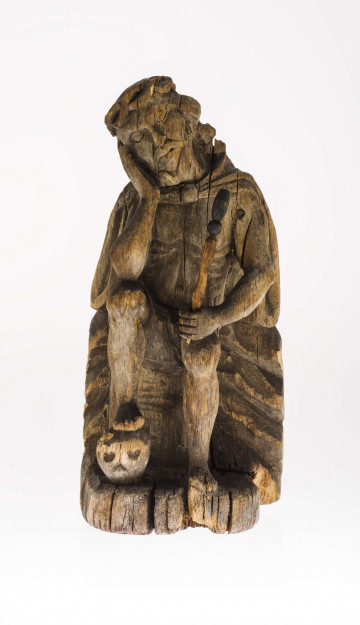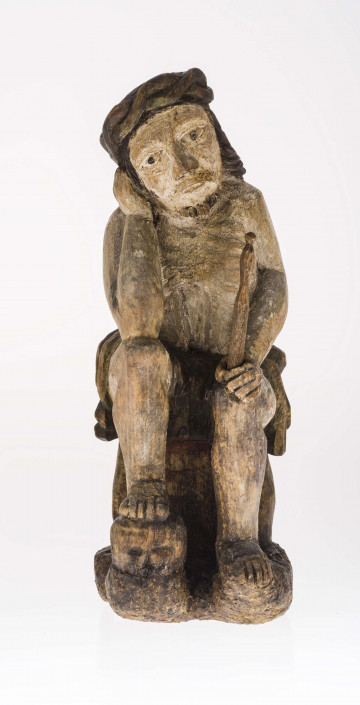
Pensive Christ
1801 — 1850
National Museum in Lublin
Part of the collection: Folk Art of the Lublin Region (17th–1st half of the 20th c.)
The image of the Sorrowful Christ held a privileged position in popular culture. The inspiration for making the figures came from Gothic or Baroque sculptures found in churches (see E/357/ML, E/358/ML). Gothic imagery was similar throughout the country: Jesus, stripped of his clothes, wearing a hip-band (perizonium) and a crown of thorns, sits on a block of rock, supporting his head on his right hand, and has the skull of Adam placed on his knee or under his foot. The Baroque introduced new elements to this depiction - a royal mantle and a sceptre-cane.
The creators of sculptures in roadside shrines were usually skilled country carpenters, self-taught sculptors. They were making holly sculptures on an occasional basis, according to a specific order, that is why they were often unknown by name. A special group were travelling carvers - specialists moving around the neighbouring villages. In the 1860s, Józef Kwiatkowski was active in the Łęczna area. Apart from "Sorrowful" or "Proud", as the figures of the Sorrowful were called in the eastern parts of the country (e.g. in Kashubia - "Płaczebóg", in Cracow - "Święta Turbacyja", in Podhale - "Miłosierdzie"), he also carved figures of the Crucified Christ.
Author / creator
Dimensions
cały obiekt: height: 50 cm
Object type
sculpture
Technique
polychromy
Material
wood, paint
Creation time / dating
Creation / finding place
Owner
The National Museum in Lublin
Identification number
Location / status

1801 — 1850
National Museum in Lublin

1801 — 1900
National Museum in Lublin

1801 — 1900
National Museum in Lublin
DISCOVER this TOPIC
Museum of King Jan III's Palace at Wilanów
DISCOVER this PATH
Educational path